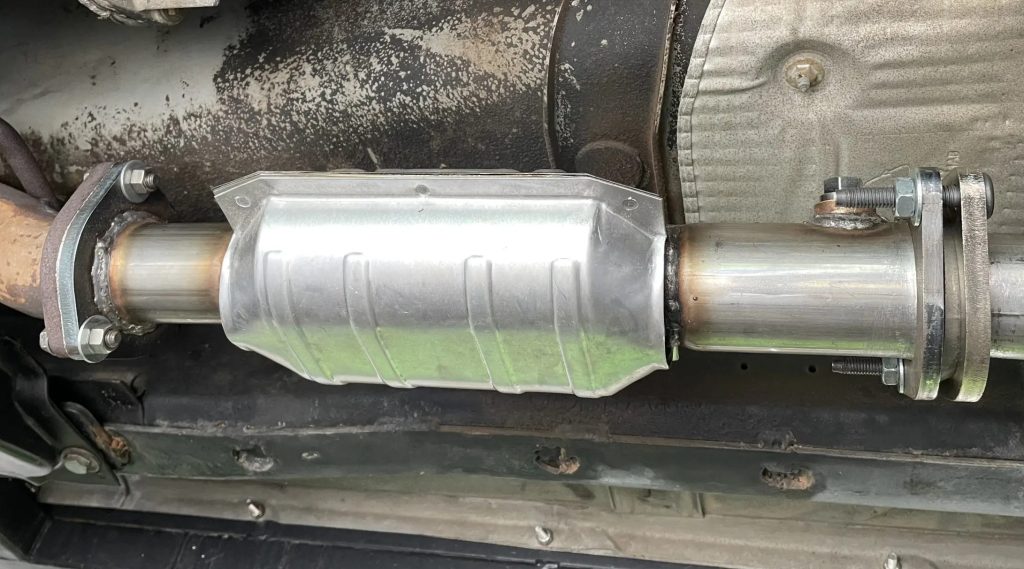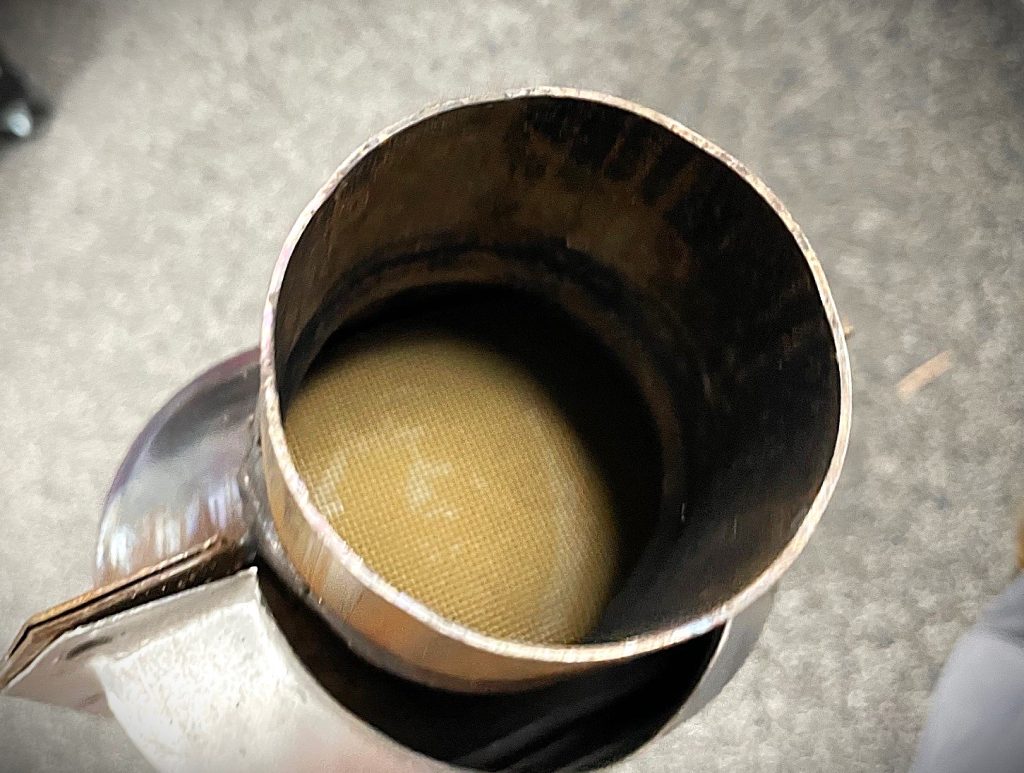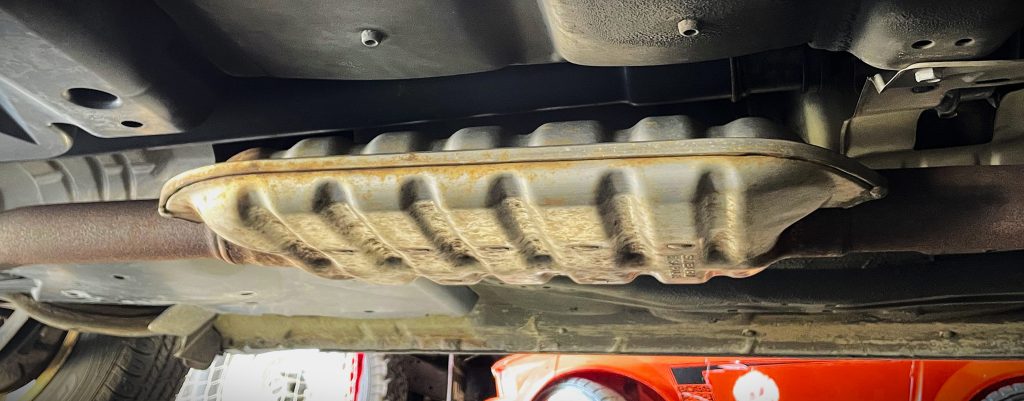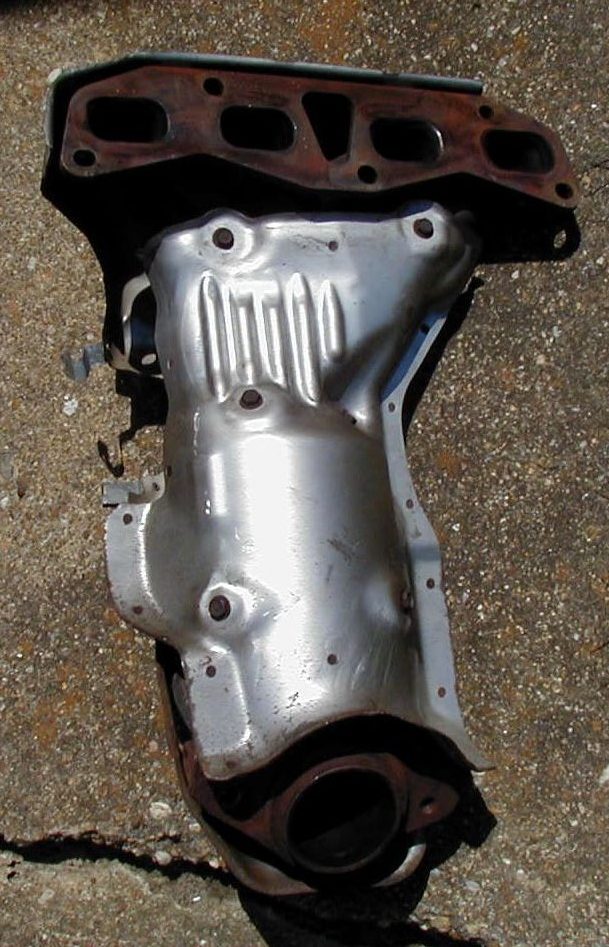As part of The Clean Air Act passed in 1970, starting in 1975, federal law mandates the use of a catalytic converter in all road-legal passenger cars sold in the United States. Since their introduction, catalytic converters have seen widespread adoption across the planet, and you’ll find them on passenger cars, light- and heavy-duty trucks, motorcycles, industrial equipment, and ag machinery.
Before we go much further, we should diffuse the myth that removing a catalytic converter improves performance.
Todays modern catalytic converters have a negligible—if any—impact on power output.
In other words, don’t be tempted to remove your catalytic converter in the name of performance. More importantly, since they are mandated by the government, it’s illegal to tamper with, modify, or remove your catalytic converter in the United States. The EPA spells it out pretty clearly:
“Under federal law, catalytic converters may not be removed and replaced with ‘converter replacement pipes’ by any person. The 1990 Clean Air Act Amendments even prohibit private individuals from installing ‘converter replacement pipes’ on their own vehicles. Anyone who installs such pipes would violate section 203(a)(3)(A) and (B) of the Clean Air Act.”
You can get more insight on the topic in this memo direct from the EPA.

What Does a Catalytic Converter Do?
A catalytic converter is part of your vehicle’s emissions control system, a catalytic converter essentially changes harmful combustion gasses leaving your engine into (relatively) safer tailpipe emissions.
We’ll skip a lengthy discussion on the actual chemical process that occurs within a catalytic converter, save for some basic etymology:
A catalytic converter works by catalyzing (which is a fancy word for starting) a chemical reaction within the exhaust gasses, breaking down the harmful elements (namely carbon monoxide and nitrogen oxides), ergo effectively converting it to carbon dioxide, nitrogen, and water vapor.

There are several different types of catalytic converters in use around the globe, and the design has continually evolved and improved since mainstream catalytic converter adoption began in earnest during the 1970s. But the core principle is the same, a catalytic converter (AKA, simply a “cat”) helps mitigate dangerous tailpipe emissions from your vehicle’s engine.
Where Do You Find the Catalytic Converter on Your Vehicle?
As you’d guess, you’ll probably find your car or truck’s catalytic converter under the vehicle, typically located on the exhaust tubing between the exhaust manifold and the resonator (if equipped).
If you’re able to, lay down near the vehicle’s rocker, peer underneath, and you might see something like-a this:

From the factory, most catalytic converters are shrouded in heat shields, so you probably won’t see the converter itself, but rather its clamshell covering.
Don’t be alarmed if you see some minor surface rust, as these heat shields are particularly prone to corrosion. That said, if you notice any retaining tabs are rusted off, or the shield is sitting at an odd angle, it could be a clue that you need to repair the heatshield itself. And that’s doubly true if you’ve been noticing an odd rattle or clank lately—a loose catalytic converter heat shield is often a common culprit.
Another good test is, with a COLD(!) engine, you can reach under the vehicle and gently(!) wiggle or nudge the shield with, say, a broomstick. If there’s a lot of play and movement, then it’s probably a good idea to take it to a pro for further investigation.
Don’t panic though, a good muffler shop can fix a lot of these issues with some clamps and fasteners.
How Many Catalytic Converters Does Your Vehicle Have?
Here’s where it gets tricky, a lot of modern engines rely on what is called a pre-catalytic converter located upstream of the main converter under the vehicle—usually built right into the exhaust manifold itself.
Given its location closer to the engine, a pre-catalytic converter heats up faster than the main cat to help reduce emissions in the early minutes after a cold-weather startup.
And since it’s a technically a pre-catalytic converter—a pre-cat, if you will—you’ll often hear these jokingly referred to in gearhead circles as “kittens.”

Signs That Your Catalytic Converter is Going Bad
A modern catalytic converter can easily last several years—but a catalytic converter’s lifespan also depends on a lot of factors, including the driving environment, fuel quality, and driving style. In our experience driving on the salt- and snow-covered roads of northern Ohio, rust is a particular danger.
So like a lot of things, your mileage may vary—literally.
If you do think your catalytic converter is starting to fail, the good news is there are a handful of obvious symptoms and signs to look for. Here are a few of the more common indicators that your catalytic converter needs to be replaced:
- Strong rotten eggs stench
- Sluggish engine performance, especially on acceleration
- Check engine light on the dash
- Poor fuel economy
- Glowing red hot catalytic converter (look underneath your car after a drive!)
Since it’s such an important topic, we’ve got a much more in-depth article on spotting issues with your catalytic converter. Check it out here: How to Diagnose Catalytic Converter Problems
Modern Aftermarket Catalytic Converters

We alluded to this earlier, but catalytic converters have gotten a bad rap.
Yeah, at the launch of The Clean Air Act over fifty years ago, there were some potential power-robbing drawbacks to installing a catalytic converter, but that’s simply not the case nowadays.
We’re certainly no experts on exhaust system design around here. But our pal Rich Waitas from Magnaflow sure as heck is—here’s his take on modern emissions equipment:
“We’re in an era where removing catalytic converters just isn’t an option. The OEMs have spent a tremendous amount of time to make sure those devices are actually capable of operating with, say, a Demon 170—a 1,000 horsepower car.
“Streel legal cars are producing four-digit numbers through a catalytic converter. So the perception that the converter is part of the problem, is kind of an old mentality.
“But there are ways to continue to tune and calibrate tune so that the vehicle remains legal.”
Rich Waitas, MagnaFlow
That snippet was part of a larger interview all about exhaust system tech that we recorded for the OnAllCylinders Podcast. You can check out the whole episode below:
***
Exhaust systems are far more than just a jumble of pipes under your vehicle. Picking the best exhaust system for your specific application can be a complex, nuanced process. The good news is, if you know what your expectations are, then picking the right aftermarket exhaust becomes really easy.
To help you out, we’ve got oodles (yes, oodles) of articles and tech stories on exhaust systems. If you’re in the market for an exhaust system upgrade, here are some good articles to check out:
- A Beginner’s Guide to Aftermarket Exhaust Systems
- How To Choose an Aftermarket Exhaust System
- An Introduction to Exhaust System Components
- How Does an Exhaust Pipe Affect Engine Performance?
- How Much Horsepower Does a Dual Exhaust Add?
- What is the Purpose of a Crossover Pipe on an Exhaust?
- Exhaust Scavenging, Explained

Comments